Aviation faces a triple crisis; Climate + Energy + Financial, that it must address and adapt to for not loosing its competitiveness in a world facing the most disruptive time period in modern time in the foundational sectors of Energy, Transport, Information, Food and Materials.
Aviation is a highly Energy dependent business, it is what turns our engines on the aircrafts and makes flights possible. The true future of Green sustainable Aviation holds a range of Green energy supply solutions, each more suitable than others for different segments.
But current strategy largely embrace a "one-fuel-fits-all" mindset called Power-to-X based on Hydrogen, a mindset Aviation has been used to for over a century in the fossil fuel age. But data shows that legacy mindset will likely render Aviation less competitive, if it only stick to that same old strategy.
This article is not about slandering Hydrogen nor Power-to-X, we have nothing for nor against Hydrogen, we have no stake in either energy supply solution, we only seek the best, cleanest and cheapest solutions based on data. By reference to independent experts, we will show why Green Hydrogen will be more expensive for decades than other Hydrogen solutions and especially much more expensive where Battery-Electric and Hybrid power can be used as a cheaper, better and cleaner solution.
Green Hydrogen is promoted as the cheap clean fuel of the future, but why hasn't the Energy Sector then already started cleaning up the current Grey & Black CO2 emitting Hydrogen production and converted it to Green Hydrogen. It will require world-wide up to 130.000 wind turbines to do so, providing all the incentives and scale the business need to prove that their business-plan making Green Hydrogen competitive is true.
By: John Martin Winther Andersen
Aviation is feeling the impact of current climate debates like "flygskam" (Flight Shame), France banned flights that can be taken by train or bus within 2,5 hours of travel time and a Danish politician wants to ban flights that a train can do within 12 (twelve) hours of travel time, an idea that seems to have an origin from the year 2020 by others.
Aviation is a large energy consumer, so energy is a very big part of Aviations cost, so when Aviation decides to transit away from fossil fuels as current energy source to new Green sources of energy, Aviation need to look at the entire energy production(s) and supply-chain(s) it then choose to rely on in the future.
Because the choice(s) we do today of tomorrows energy will dictate how we design and use our aircrafts, its infrastructure and our services, the choice(s) we make today at this cross road is very important for making Aviation Green, Affordable and Competitive for decades to come. We must analyze the choice(s) thoroughly with an open mind, not only thinking about how we did it yesterday, but if other ways are better include them to continue securing a sound future for Aviation.
Aviation focus on Power-to-X because it technically fits into its legacy supply-chain & legacy aircrafts. But history and data indicate Power-to-X fuel will be more expensive than other Green alternatives and possibly fossil fuels. How will that keep Aviation Competitive, Green and Sound at the same time ?
To date Aviation has at large bet on Hydrogen and its derivative "sister" Power-to-X as the replacement away from fossil fuel, a bet that also seems to need public money to support its goal.
The Alternatives
Before going through Hydrogens pros and cons as a replacement for fossil fuel, let's go through the Alternatives that also can make aircrafts fly sustainable.
- Battery-Electric
- A hybrid combination of Battery-Electric and SAF for extended range
- SAF (Sustainable Aviation Fuel) made from sustainable Bio-mass
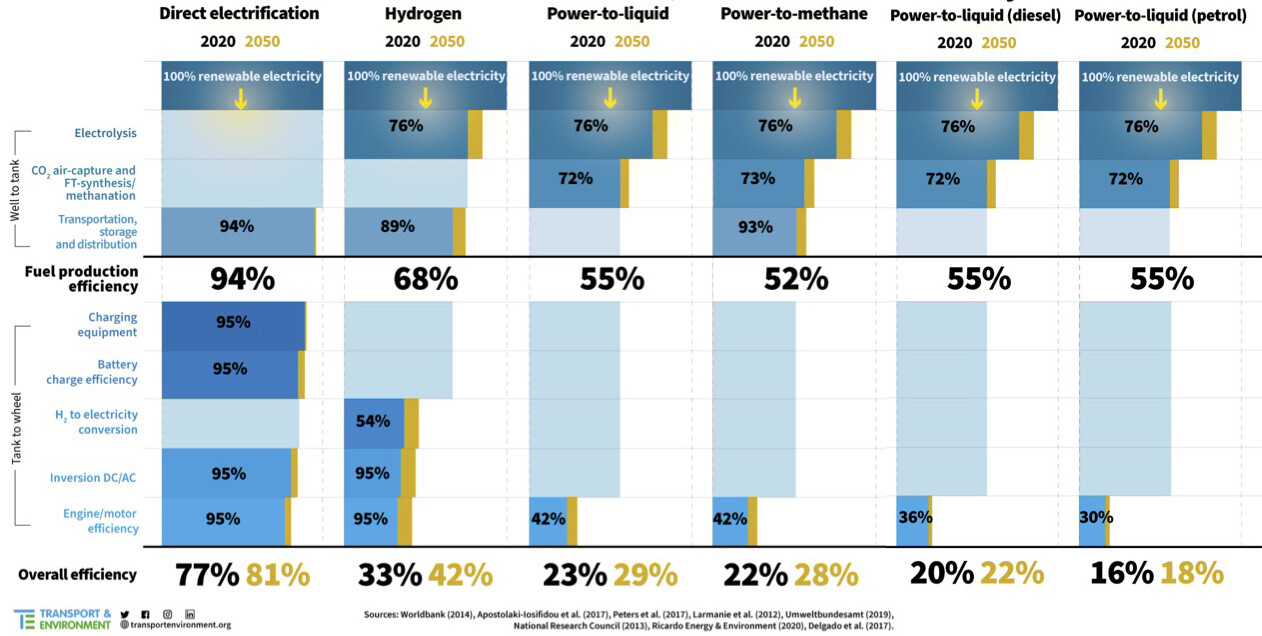
Above chart shows how efficient the end result is from the same 100% of electricity produced at the wind turbine (or solar cell etc.) when it has gone through all the different steps and processes to finally deliver what is left of the initial electricity at the propeller, for example using Direct Electrification (first column) shows that out of 100% energy produced at the wind turbine, 77% is left to turn the propeller so only a loss of 23% of energy. And 81% efficiency is expected by year 2050.
Battery-Electric
The chart shows that Battery-Electric (Direct Electrification) is the most energy efficient way to use electricity from sustainable sources like wind turbines, solar-cells, hydro and nuclear to turn an aircrafts propellers, fans or rotors. Simplified said it uses 3-5x less energy from the sustainable sources to deliver the same amount of energy at the propeller than Hydrogen or Power-to-X, meaning Hydrogen and Power-to-X uses 3-5x more wind-turbines, solar-cells etc. than Battery-Electric.
Today batteries capacity (specific-energy) can power cars, medium sized trucks and busses, coastal ships and small sports airplanes, but their specific-energy is yet not sufficient for what Aviation needs to power larger commercial aircrafts.
As mentioned in our July article "Hydrogen - To Be or Not To Be", historic data for many decades shows that batteries specific-energy on average increases 5-8% per year, in later years closer to 8% than 5%. It is therefore simple to establish a projection when batteries can be expected to have a high enough specific-energy to power commercial sized aircrafts for airliners for a certain distance.
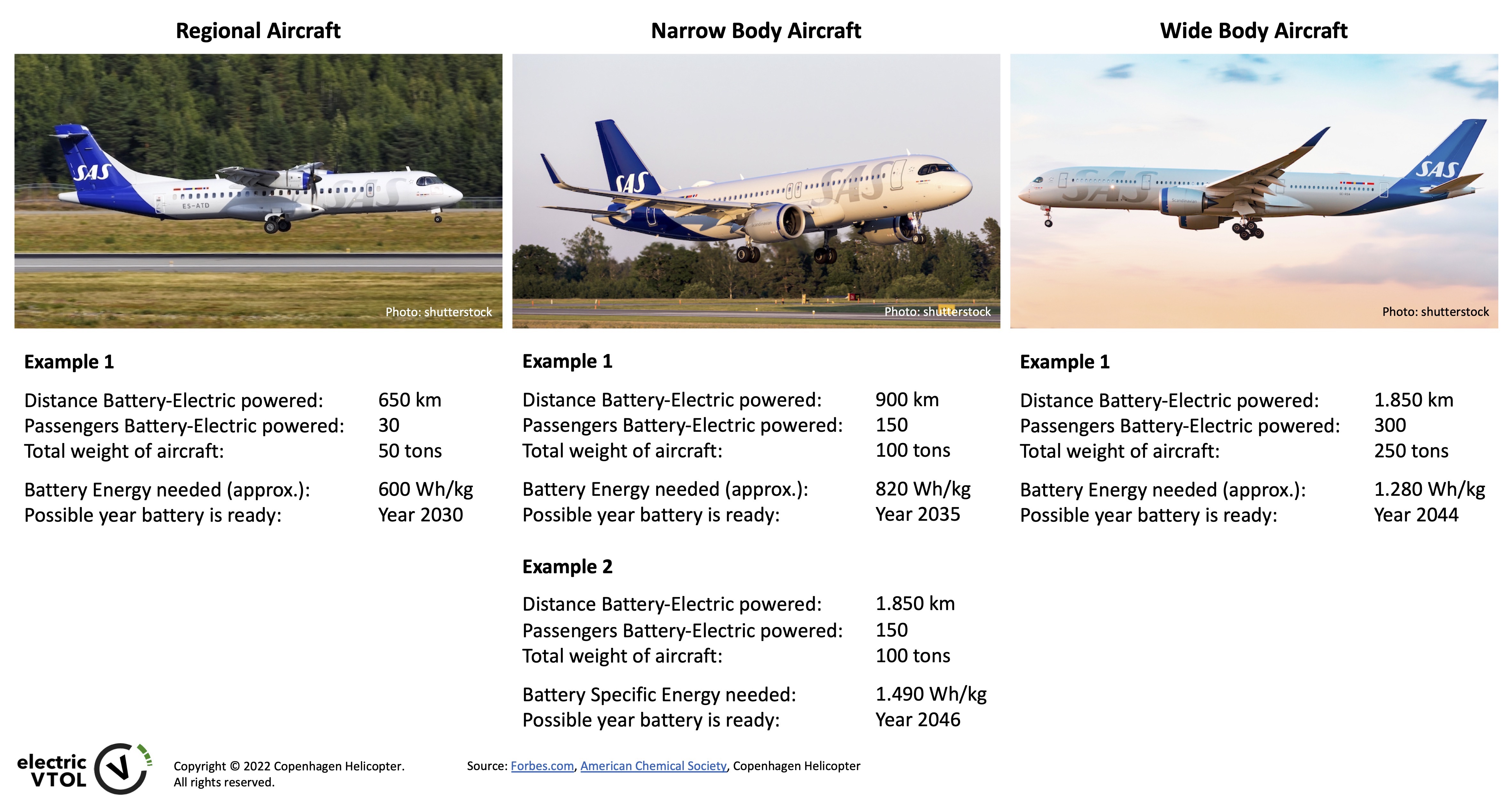
For example according to ACS approx. 650 km distance, equivalent for a Copenhagen to Stockholm, Oslo, Prague or Amsterdam route, is battery-wise plausible by year 2030 in the smaller Regional sized aircraft like CRJ's and ATR's, and by year 2036 a 1.000 km route in a narrow-body like Airbus 220/320 and Boeing 737 from Copenhagen to Paris, London, Munich, Zurich etc. is battery-wise plausible.
Distances beyond 1.000 km will follow as evolution in battery capacity continue, though long-haul especially in wide-body aircrafts like crossing the Atlantic or Pacific, is not expected with pure Battery-Electric aircrafts in any foreseeable decades. Unless we change the way we travel, for example if one travel with Iceland Air over the Atlantic, one stop on Iceland for a couple of hours or so or have a stay over if one so choose, before continuing the travel.
Splitting one large journey into several shorter trips could make pure Battery-Electric aircrafts possible even on longer journeys, making time to recharge at each stop. And if you are traveling for holiday, why the rush then ? - have a break, stretch your legs, relax and enjoy an airports lounge, services and local cuisines or a short onshore excursion before continuing your journey, something like an electrified airborn cruise ship experience.
Hybrid combination of Battery-Electric and SAF
Though the plausible fuel-efficient and most cost-effective alternative mode of flying for many long-haul flights will be a hybrid powertrain solution, meaning a combination of Battery-Electric for take-off and landings and relatively small(er) turbine(s) engines using SAF Bio-fuel for the en-route part to power the electric motors turning the propellers/fans, only utilizing the turbine engines at their optimum designed conditions (altitude, temperatures, workload etc.) for lowest fuel consumption as possible, but also to keep local CO2 and NOx pollutions during take-offs, landings and taxi at airports to zero.
SAF (Sustainable Aviation Fuel) Bio-mass
Truly sustainable SAF made from waste products and other left over bio masses is a good alternative to fossil fuels, since it is CO2 neutral meaning the CO2 it emit comes from sources that has already taken the CO2 out of the worlds air, it demands no renewable power to produce energy and can use current logistics and storage, but it is a limited resource because there is only so much land and so much amount of waste it can be made from without for example clearing extra land like fragile jungles, rainforests etc. for additional farmland to produce crops for fuel or taking food from those who really need the food to live or survive on, so unfortunately we can not swap all the worlds current fossil fuel usage 1:1 with SAF if its going to be done in a sustainable, responsible and human way.
SAF Bio-fuel should therefore be reserved for those applications and routes, where there really is no other practical option to replace fossil fuel, like on one-stop long-haul flights.
Other environmental impacts
An often forgotten environmental topic in the debate of what new energy source Aviation should rely on in the future to become CO2 neutral, is noise.
In regards of noise, the different propulsion methods can be divided into two groups, the ones that burn stuff (combustion engines) to create propulsion vs. those two that does not, i.e. Electrification and Fuel-Cell. To date the amount of data on noise difference between combustion engines and electric motors on larger commercial aircrafts is limited, especially with a comparison on the same type of airframe, but there is no doubt there is a significant difference when removing from the equation the part that has a noisy combustion in its powertrain.
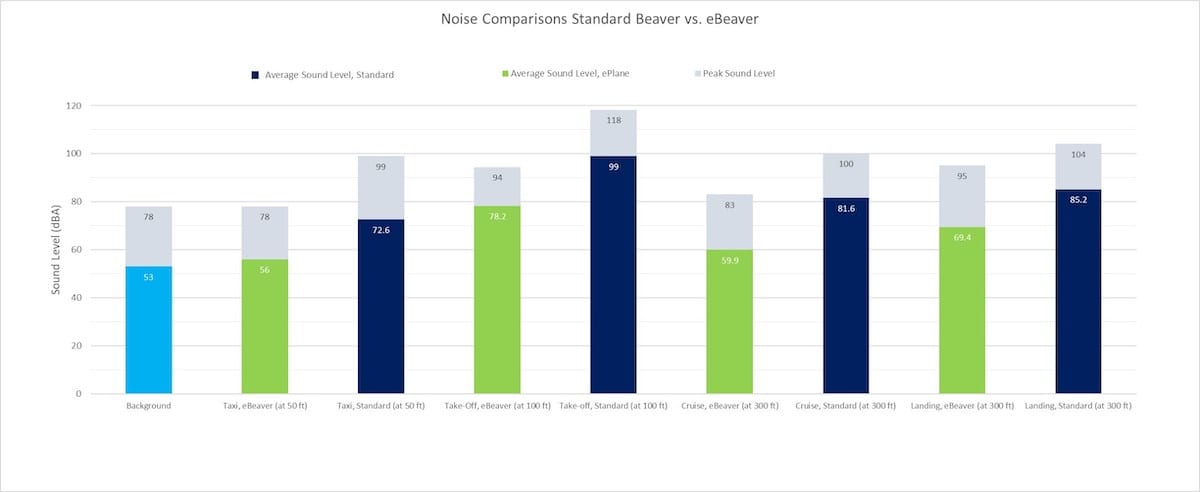
magniX has in corporation with operator Harbour Air, converted one of their turboprop de Havilland Beaver DHC-2T airplanes, that used a PT6 Turboprop engine running on fossil fuel, a type of engine used on many Regional commuter aircrafts. The difference was significant, ranging from 16-22 dBA lower noise emissions using electric motor instead of combustion engine, especially at take-off a 20,8 dBA decrease in noise. This significant difference shall at large be expected to be the same on other turboprop aircraft converted to electrification.
What the difference will be between a modern Turbofan Jet engine used on all larger modern commercial aircrafts from Airbus and Boeing vs. the same airframe with electric Turbofans is still unanswered, but knowing the noisy part is the combustion part and that 70-80% of the propulsion of a modern Turbofan Jet happens from the large fan, that essential is a shrouded propeller, and 20-30% from the hot exhaust of the Jet engine itself, and on a Turboprop engine the portion of hot exhaust propulsion vs. propeller is even less, the decrease of noise of an electrified Turbofan engine on an airplane taking off should be expected to be even greater than 20 dBA (> 100x).
The fact that electric powered aircrafts emit a lot less noise than its counterpart using some sort of combustion engine, needs to be addressed as well for the sake of the neighbouring community to an airport and airfield and the employees working there.
In addition to local noise from aircraft operations, in our collected search for the best new energy solutions for Aviation, we also need to address and include local emissions produced from combustion engines on an aircraft, because no matter what their fuel is produced from, if its fossil fuel or Green Power-to-X that on a global scale has zero effect on climate change because it has taken CO2 out of the air and pared it with Hydrogen to create Power-to-X, locally it is still felt as emissions in and around the airport neighbouring communities with the side-effects it can create like respiratory disorders etc..
Beside fossil fuel and Power-to-X both locally emit CO2, little attention has been given that no matter if we burn fossil fuel or Hydrogen or Power-to-X, they all three produce some level of NOx emissions. Electrification and Fuel-Cell powertrain does neither of this, no local CO2 no NOx emissions.
In addition to environmental concerns, battery-powered aircrafts does not create contrails and though still not fully understood by experts it is suspected to count for over half of aviations entire climate impacts.
Finally, recycling batteries is today technically possible for up to 95% of the batteries materials, so the materials can be used again in for example manufacturing new batteries. But recycling batteries need to be at large scale to make recycling a viable business and competitive vs. digging out new raw materials.
Below a simplified technical comparison between current fossil fuel and the alternatives in Hydrogen (and Fuel-Cell), Power-to-X, SAF (Bio Fuel) and Electrification.

So what are some of the problems with Hydrogen and its "sister" Power-to-X as a fuel especially in a triple-crises as Aviation and everybody else finds themselves in ?
- Hydrogen has an extremely low Energy Density, meaning it occupy a massive amount of space, making it in Aviation impractical to use. Power-to-X does not have this issue.
- Hydrogen or Power-to-X require approx. 3x to 5x more renewable energy than Battery-Electric powered aircrafts, meaning 3x to 5x more wind-turbines, solar cells etc. is needed to produce its type of energy, meaning 3x to 5x higher electricity cost than Battery-Electric, making it non-competitive when Electrification can work in the same market, route etc..
- Hydrogen or Power-to-X has no proven track record of being commercially viable at scale in contrast to Battery-Electric. Hydrogen and Power-to-X are known technologies for many decades but never proven itself commercially viable as a fuel.
- Hydrogen is the worlds smallest atom, i.e. it's highly difficult to storage and especially transport at scale, it wants to escape any containment even through many solid materials. It has to be kept under high pressure or cooled down below -253 degree celsius to become a liquid. Power-to-X does not have this issue.
- Despite lobbyism, heavy subsidizing, marketing and hypes since the 90's, Hydrogen has never taken off at scale in any form of transportation. Grid-Electric, Battery-Electric and Hybrid powered solutions has always won over Hydrogen.
- Hydrogen and Power-to-X produce local emissions / pollutions and noise when burned, i.e. combustion engines of any kind.
- If Hydrogen accidentally starts as a fire, it is in daylight colorless, smokeless, odorless and highly explosive with potential large blast-radius if out of control. Power-to-X does not have these issues and no more dangerous than other carbon-based fuels.
- If the business case for Green Hydrogen is good and sound, for sure we would have already seen the worlds Energy companies stopped producing the worlds current need of 94 mill. tons per year Hydrogen as CO2 emitting Grey and Black Hydrogen and replaced it with Green Hydrogen. The incentives and scale is for sure there, requiring up to 130.000 wind turbines. Yet we have seen no move from the worlds Energy companies, cleaning that up first before heavily promoting Hydrogen as a fuel.
Below we describe in more details the apparent and upcoming issues, challenges etc. with using Hydrogen as a fuel.
What is Hydrogen and how is it produced
It is important to understand that Hydrogen is not an energy source, but an energy carrier. Difference is that Hydrogen is not found on earth as a stand-alone substance, it is attached to something else like water (H2O) or methane gas (CH4).
"Hydrogen is not an energy source, but an energy carrier."
This means a an external energy source like electricity or heat needs to be applied to the substance that Hydrogen is a part of to separate the Hydrogen from the substance, so as a carrier it can carry energy, for example by splitting it away from water via electrolysis or as it's done in 99% of today's production of Hydrogen, which is Grey (natural gas) or Black (coal), run through a 700-1.000 degress celsius steam heat reforming process splitting it from Natural Gas (i.e. methane gas), both processes with huge energy losses and consumptions in the process as a result.
Hydrogen is not just Hydrogen
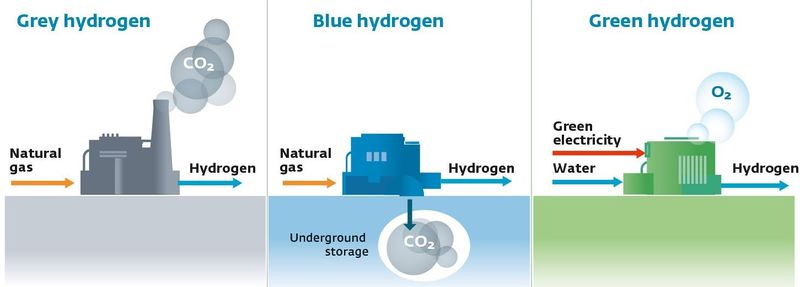
To evaluate a potential transit to a future of Hydrogen, we need to understand the different processes future Hydrogen comes from. As mentioned above Hydrogen comes mainly from two different sources, one is Green and made from electricity from only renewable sources like wind-turbines, solar-cells, hydro and nuclear plus water. The other source of future Hydrogen is Blue and Grey, which both are made from Natural Gas (i.e. fossil fuel), which contain 70-90% Methane Gas.
".. The total amount of fugitive methane from oil and gas industry as emissions is something like the equivalent of the total carbon footprint of Europe .." - Professor David Cebon, University of Cambridge
Difference on Blue and Grey Hydrogen is that Blue storage (or it try to) its CO2 emissions in the ground or such like, where Grey releases its CO2 into the atmosphere in the production process, being dirtier than Blue. Though according to experts it is doubtful that Blue Hydrogen will ever work or happen at scale due to its cost and not at least 20 years track record of not reaching its many set goals and promises around the world.
Due to how the global Oil & Gas industry mishandle Natural Gas many places around the world in an non-environmentally unsafe matter letting a lot of leaks happen, due to Oil & Gas is not very regulated many places around the world and due to Oil & Gas industry should have no trust left in the public after half a century of denying, lying and delaying climate actions, Green Hydrogen must be advanced instead of Blue and Grey.
Lately cost of producing Green Hydrogen has beaten Grey and Blue, but not so much because Green Hydrogen has become significantly cheaper, but because of the crisis with Russia & Ukraine cutting out Natural Gas from Russia by political tools for the time being. In a post-Russia/Ukraine crisis, unless real tax on emissions that can be felt on Grey Hydrogen happens to parity the cost of its more expensive Green alternative until Green Hydrogen hopefully by 2050 or so can match cost of Blue and Grey Hydrogen, it would be financially natural to expect a return of the order of Hydrogen cost to Grey as the cheapest, then Blue and Green battling as no. 2, leaving Green somewhat stranded due to current cost before it can be scaled up over the next decades.
The world already produce wast amount of Hydrogen, but it's not Green
A topic that somewhat slipped the public discussions of producing Green Hydrogen for all sorts of new purposes replacing fossil fuels in the future incl. for Aviation, is that 94 mill. tons of Hydrogen is already produced today world-wide per year, emitting 830 mill. tons of carbon per year and rising, of which 99% is made by Natural Gas or Coal as Grey or Black Hydrogen, the most polluting types of Hydrogen.
"Before we position hydrogen as the solution to climate change, we first have to deal with hydrogen as a problem in climate change" - Bloomberg NEF analyst, Michael Liebreich
Producing these 94 mill. tons Hydrogen from Green Hydrogen instead of yesterdays, todays and tomorrows Grey and Black Hydrogen requires 143% of all the wind and solar installed globally to date. Figures from other independent renowned experts we have consulted puts it at at least 200% of all the wind and solar installed globally in 2019.
200% of all global wind and solar equates to 130.000 wind turbines on Horns Rev 3
Even if offshore wind-turbines in two decades from now become an average size of 15 MW, turning the worlds current Grey to Green Hydrogen still need approx. 70.000 wind-turbines of 15 MW capacity each.
One has to wonder why hasn't the global energy sector yet swapped the current 94 mill. tons fossil fuel based Hydrogen produced per year for use like fertilizer with Green Hydrogen, if Green Hydrogen at scale is an affordable and competitive alternative. The incentives certainly seems to be there at scale and an easy opportunity for the energy business to prove the world that their business case is sound.
Green Hydrogen as a fuel
Hydrogen as an energy source for transportation has an extremely poor energy-density compared to its fossil fuel competitor it wants to replace, that is Jet A1 for Aviation. It's a topic we looked into in details with consultancy from independent experts in the field like h2sciencecoalition. Calculations shows to replace the fossil fuel (Jet A1) sold in Aviation just in Denmark with Power-to-X based on Green Hydrogen, we need up to 1.500 offshore wind turbines, which will be for the first decades be costly making Green Hydrogen in competition to Grey or Blue Hydrogen, unless carbon taxes are set in place to parity the cost of producing Green Hydrogen.
Adding emission tax on Grey Hydrogen to parity cost of Green Hydrogen, only excludes the Grey. It doesn't lower the cost of Green Hydrogen to be competitive with other non-Hydrogen non-emission Green energy sources, like solar-wind-batteries.
According to independent experts like h2sciencecoalition, replacing all fossil fuel usage in aviation from the EU, requires 81.000 - 96.300 km2 surface area filled with wind turbines depending on type of aircraft engines it replaces, just to deliver enough green electricity to produce Hydrogen for EU's aviation sector.
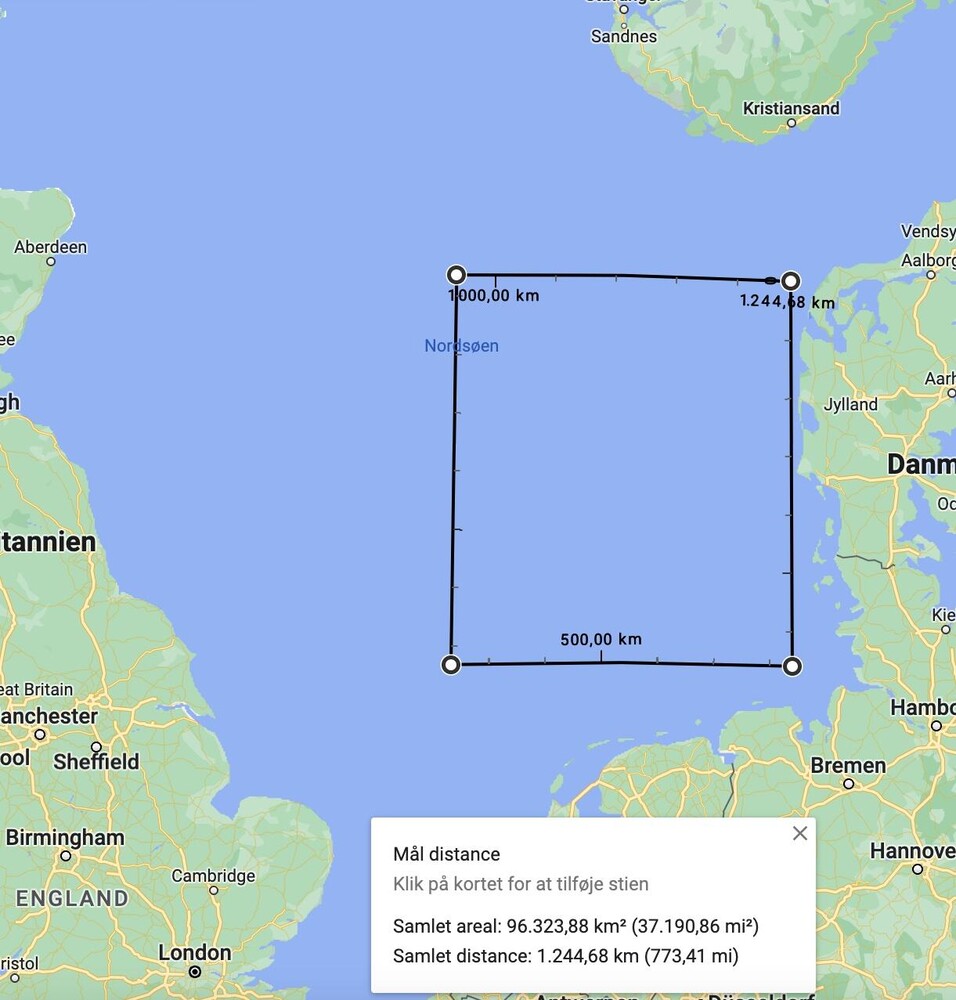
96.300 km2 is 2x the size of Denmark landmass covered with wind-turbines.
In addition to the wast amount of wind-turbines, many independent experts disregard usage of Hydrogen with Fuel-Cells, both due to the great difficulties of handling and adapting current infrastructure and aircrafts to Hydrogen, and due to it has been tried, hyped, lobbied and subsidized several times in the past in other modes of transportation and failed to scale up each time, i.e. busses, trucks, cars etc.
To replace 2% of the kerosene used in EU, needs 5.000 wind-turbines. Meaning, replacing 100% of kerosene used in EU, largely used for fuel in Aviation, needs 250.000 wind-turbines in EU.
If we are to replace all the 100% of kerosene we use in the EU, where a large part goes to producing Jet fuel, it requires 250.000 wind-turbines, according to DW (2% = 5.000 wind-turbines). In the record year of 2021 for installing wind-turbines all over the EU, onshore and offshore all together, equates to approx. 1.700 wind-turbines installed all over the EU in 2021. If we are to install 250.000 wind-turbines all over the EU, land and ocean just for replacing kerosene with Power-to-X, with this pace the last of the 250.000 wind-turbines will not be installed until around year 2170, or approx. 147 years from now, plus in that period pretty much nobody else gets to have wind-turbines installed for other uses if capacity is occupied for this demand.
We mention these examples of massive amount of needed wind-turbines for usage of a singular purpose, to visualize by sheer numbers the apparent unrealistic amount of wind-turbines needed just for a single business such as transportation needs for using Hydrogen or Power-to-X as a fuel. At eVTOL.dk we have tried to make sense in those who advocate for usage of Hydrogen and Power-to-X for several different purposes especially as a fuel, but can not find it based on the data and history we have found.
We have to realize and act upon that renewable energy production is a scarce resource and will be for many decades to come, meaning there seems to be no realistic surplus at scale of renewable energy to use on things like Hydrogen for fuel, where it takes 3-5x more energy from the wind-turbines than pure Electric-Battery propulsion. The sources are scarce.
Start using Green Hydrogen where it's really needed first
On top of the 94 mill. tons of Grey Hydrogen produced today, which is needed to produce important things like fertilizer to help feed the +7 billions of people on this earth, renewable energy resources also need to replace all other current fossil fuel spendings like Power Plants on Gas and Coal, it could be done with for example grid connected Sand batteries for District Heating and Industrial needs, or heat pumps housing, not to forget the sometimes questionable Biomass as fuel, before being wasted on any Green Hydrogen for transportation, wasting up to 80% of the produced renewable energy.
For transportation incl. Aviation in a time of both financial, energy and climate crisis at the same time, we have to be smart and prioritize where we use the scarce amount of Green Energy we have now and we can afford and have time/capacity to build in the next couple of decades to come. The solutions are easy to find, direct electrification like on trains and many trucks, battery-electric or hybrid-biofuel propulsion, where ever each solution is most suitable. These solutions are much more energy efficient, using a fraction of renewable energy produced compared to Hydrogen and its "sister" Power-to-X.
Focus and Fundings
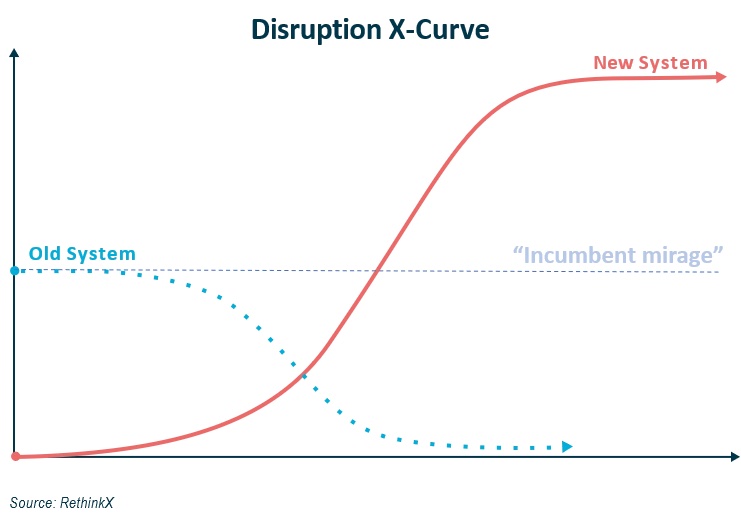
Unfortunately focus and fundings among Aviations legacy companies, suppliers, lobby-organizations etc. are mainly on solutions that fits into their "old world" of aviation by advocating Hydrogen and Power-to-X as a replacement to current delivery and usage of fossil fuel.
It is a shame with little to no focus and fundings on Battery-Electric as an energy source in Aviation. Because where it can be used in a few years on more and more commercial routes as batteries evolves, beside being much more energy efficient than Hydrogen and Power-to-X, meaning demanding a lot fever of the scarce amount of wind-turbines and solar cell plants able to detach sooner from fossil fuels on more and more routes than Hydrogen and Power-to-X, delivering zero local polluting and a lot less noisy, just like many other disruptions according to our survey there are possible extra positive purposes going Battery-Electric in for example rural locations with small airports and vertiports on the country side, where the unused surface of a small airport/vertiport with solar cells of such place can supply the needed electricity to the expected amount of charging and departure of Battery-Electric aircrafts plus delivering a possible surplus of local produced green energy to the local grid for example as a peak-plant for the local community.
A successful climate action plan is no longer just about the rapid build out of wind turbines and the phasing out of coal plants. It is about deploying all the solutions we have within the right sectors, ensuring that we tap into all expertise available to guide these decisions - H2 Hydrogen Science Coalition

